Deckbuilding is as much an art as it is a science, it is known, but all of our best stories tell us about the art. Follow the tale of Mark Herberholz’s long step away from the inbred “Beach House” deck to win the Pro Tour with Heezy Street and the art is right there to see: yes, there was a rigorous and methodical exploration of the format in the playtesting that led Mark to build his deck from scratch when he didn’t feel like the uber-team’s deck was where he wanted to be in the metagame, but filling that void with sixty cards feels like art, not science. Building that first sixty cards is an art form – it’s poking and prodding at it to rigorously pull five cards out and put the right five cards back in that’s where the science comes in. Building that first deck is awesome – a creative experience that guides you along by feeling and instinct. Tuning that deck, however – that’s the slog, when the spreadsheets come out and we need a data-driven answer for what yielded the best results.
For the Modern PTQ season last year, I got to be an artist. My testing time was limited, which felt weird after a year of basically being able to make whatever event I wanted to focus on fit into my schedule – your weekends will tend to be a lot freer when your girlfriend is ten thousand miles away, after all. But upon her return at the start of last year I cut back on most of my gaming plans, and it was obviously correct to do so… but there was one PTQ I had my eye on, because you don’t really have to make a lot of time for the event that you can walk to from your home. And without having ever actually played a game of Modern with a Birthing Pod deck, I theorized and harmonized and came up with a most excellent weapon: a fast, no-nonsense version of the “typical” Kiki-Pod deck, built for speed and streamlined to focus on completing the combo effectively. I wrote about that deck here, in my article “Pod People,” happy with where that act of artistic creation had taken me.
A year has since passed and despite multiple opportunities to do so, Wizards of the Coast refuses to ban Birthing Pod in Modern. They’ve shifted the metagame considerably away from where I would want it to be, by taking away Deathrite Shaman – yes, it was probably too good for Modern, but with its disappearance I lost all of my pretty-favorable Jund matchups and gained a lot of not-very-favorable-at-all U/W/R Control matchups instead. (I was one of those people who was happy with Deathrite being where it was and wasn’t playing it in my 75, which I understand places me in the minority these days.) And since things have changed and winning with my Pod deck was no longer quite so easy, the time for art was over. I am a scientist at heart and by profession, and without things being easy anymore – without the sheer joy of stomping my way through opponent after opponent on my way to only narrowly losing in the finals of that PTQ, feeling as if the day was mine even before it began simply because I built my deck right – it was time to break out the notebook, track some statistics, and figure out what was and was not working with the deck.
Let us begin by reviewing last year’s model:
Creatures (31)
- 4 Birds of Paradise
- 3 Kiki-Jiki, Mirror Breaker
- 1 Wall of Roots
- 2 Vendilion Clique
- 3 Kitchen Finks
- 1 Murderous Redcap
- 1 Glen Elendra Archmage
- 4 Noble Hierarch
- 3 Lotus Cobra
- 1 Linvala, Keeper of Silence
- 1 Spellskite
- 2 Deceiver Exarch
- 1 Phantasmal Image
- 2 Restoration Angel
- 1 Zealous Conscripts
- 1 Izzet Staticaster
Planeswalkers (2)
Lands (23)
Spells (4)

Looking at it from the scientist’s perspective, we have to know what we can tinker with and what is absolutely non-negotiable. I included a primer about how to combo off from various board states using Birthing Pod in “Pod People,” except for the incredibly obvious ones where you already have a Kiki-Jiki in play – after all, you can find a three, a four, or a five in order to “complete” the combo from there, and “Kiki-Jiki + almost any creature in your deck + Birthing Pod” should be easy and obvious – it was the non-obvious ones I wanted to explain, like how to kill people in two turns if all you have is a Kitchen Finks… and how that was different than if that Finks was some other three-drop instead. Rather than send you back to a previous article to reference it, we’ll reprint that information here.
How To Pod People To Death
| Starting Point | Turns | Pod Activations | Method |
| 1-Drop + 2-Drop | 1 | 4 | Two-drop becomes Deceiver Exarch. Untap Pod. |
| One-drop becomes Phantasmal Image, copy Deceiver Exarch. Untap Pod. | |||
| Image-copy becomes Restoration Angel, blinking Deceiver Exarch. Untap Pod. | |||
| Restoration Angel becomes Kiki-Jiki. | |||
| 2-Drop + 2-Drop | 1 | 4 | Two-drop #1 becomes Deceiver Exarch. Untap Pod. |
| Two-drop #2 becomes Deceiver Exarch. Untap Pod. | |||
| Either Deceiver Exarch becomes Restoration Angel, blinking Deceiver Exarch. Untap Pod. | |||
| Restoration Angel becomes Kiki-Jiki. | |||
| 2-Drop + 3-Drop | 1 | 3 | Two-drop becomes Deceiver Exarch. Untap Pod. |
| Three-drop becomes Restoration Angel, blinking Deceiver Exarch. Untap Pod. | |||
| Restoration Angel becomes Kiki-Jiki. | |||
| 2-Drop + 4-Drop | 1 | 2 | Two-drop becomes Deceiver Exarch. Untap Pod. |
| Four-drop becomes Kiki-Jiki. | |||
| 4-Drop with Persist | 1 | 2 | Four-drop becomes Zealous Conscripts plus four-drop with a -1/-1 counter. Untap Pod. |
| Four-drop with -1/-1 counter becomes Kiki-Jiki. | |||
| 3-Drop + 4-Drop | 1 | 3 | Four-drop becomes Zealous Conscripts. Untap Pod. |
| Three-drop becomes Restoration Angel, blinking Zealous Conscripts. Untap Pod. | |||
| Restoration Angel becomes Kiki-Jiki. | |||
| 2-Drop + Conscripts | 1 | 3 | Two-drop becomes Deceiver Exarch. Untap Pod. |
| Deceiver Exarch becomes Restoration Angel, blinking Zealous Conscripts. Untap Pod. | |||
| Restoration Angel becomes Kiki-Jiki. | |||
| 3-Drop + Conscripts | 1 | 2 | Three-drop becomes Restoration Angel, blinking Zealous Conscripts. Untap Pod. |
| Restoration Angel becomes Kiki-Jiki. | |||
| 2-Drop | 2 | 4 | Two-drop becomes Deceiver Exarch. Untap Pod. |
| Deceiver Exarch becomes either Persist 4-drop. Pass turn. | |||
| Four-drop becomes Zealous Conscripts plus four-drop with a -1/-1 counter. Untap Pod. | |||
| Four-drop with -1/-1 counter becomes Kiki-Jiki. | |||
| 3-Drop | 2 | 3 | Three-drop becomes either Persist 4-drop. Pass turn. |
| Four-drop becomes Zealous Conscripts plus four-drop with a -1/-1 counter. Untap Pod. | |||
| Four-drop with -1/-1 counter becomes Kiki-Jiki. | |||
| Kitchen Finks | 2 | 4 | Kitchen Finks becomes Restoration Angel, blinking Kitchen Finks. Pass turn. |
| Restoration Angel becomes Zealous Conscripts. Untap Pod. | |||
| Kitchen Finks becomes Restoration Angel #2, blinking Zealous Conscripts. Untap Pod. | |||
| Restoration Angel becomes Kiki-Jiki. |
We cannot cut any of the following cards and still be able to go off from each and every one of these possible starting conditions, making them absolutely necessary — you shouldn’t even sideboard any of them out:
1 Persist Four-Drop
The deck has a few other non-negotiables; presumably if we’re invested in trying to kill people with Birthing Pod, we have to play the full four copies of it. If we’re being serious about hitting our best draws, we want to play enough one-drop mana accelerants to make sure we have one in our opening hand in the majority of our games – the lowest we can reasonably go on those while still being thoroughly committed is seven, though eight is better and nine is very close to being worth the extra slot. We also need twenty-three lands, though as with the mana dorks we can shift that up one or down one based on what else we put in the deck – as we’ll see below. Eight non-negotiable combo components plus four Birthing Pods plus eight one-drops plus twenty-three lands means that even before we fill out anything else at all in the deck – before we even add a second copy of Kiki-Jiki so we can Pod for one even if we draw a copy, or the first one gets killed – we have filled up 43 of our 60 slots.
This should be a familiar number – 43 is often mentioned as being approximately the minimum number of artifacts you have to play in your Affinity deck in order to have all of your cards operate at peak efficiency – and because of that restriction, we tend to think of Affinity as a deck that does not really “customize” very easily. So many slots are locked in that our changes will shift the percentage at the margins, not in the bulk of the deck – but unlike Affinity, we’re playing a combo deck that can tutor readily for one-ofs… and whose capacity to tutor at all is based off of the converted mana costs of the creatures it draws in any given hand… so those last seventeen cards are going to be critical, and shifting around one slot can have a serious impact in our results. By the end of last year, I had shifted my deck exactly two cards from the 75 you see above – both in the sideboard – and both of those shifts were necessary to reflect a new, changed reality.
The first of those changes came because the “Legend Rule” changed once again last year in anticipation of the release of Theros, meaning that a copy of Linvala, Keeper of Silence on my opponent’s side of the board could no longer be killed by getting a copy of Linvala into play on my side of the board. My traditional answers – Podding a one-drop into Phantasmal Image or Podding a three-drop into Linvala – no longer solved the problem. I had been trying out Sower of Temptation for the Pod mirror as a goofball slot to steal their Linvala, eliminating their copy while gaining a copy on my side of the board as well, but with the change to the Legend rule cutting off my more-straightforward answers it was time to admit that the correct sideboard card was Fiend Hunter and act accordingly.
The second of those changes was made to reflect the difficulties faced when playing against U/W/R Control – I had originally thought the third Domri Rade in my sideboard would help “shore up” that matchup, but far too often I was finding that relying on a planeswalker left my card-advantage source vulnerable to the same salvo of burn that was already making the matchup difficult. Worse yet, it was also at the whim of Fortuna gracing the top of my deck – sometimes I would always hit and once in a while I’d even ultimate Domri and get a “Can’t Possibly Lose” emblem, but far more often the card was inconsistent and my “silver bullet” for the matchup needed help or straight-up didn’t work. I figured if I could get one Pod activation off and have a “perfect” target for the matchup it would be significantly improved, so I added a copy of Thrun, the Last Troll to my sideboard just for them.
Fiddling With Decklists
Coming into the start of 2014 we see more changes from the banned and restricted list. Wild Nacatl coming off the banned list changed basically nothing at all, though it did lead to me wasting a few weeks of low-importance testing time trying to find a way to fit Delver of Secrets and Wild Nacatl onto the same team together. Bitterblossom’s unbanning likewise has not changed anything substantive, except for allowing one local player to jam turn-two Bitterblossoms once again just as hard as he did for nearly two years of Standard play. And Deathrite Shaman’s banning does not change our 75, but it does change the environment considerably – decks with Deathrite Shaman were generally pretty good matchups, but things like FistfulOfBolts.dec are not.
Things had changed, and not just incidentally (as with the Legend-rule change). With the good matchups vanishing and the hard ones gaining strength, I could no longer rest on my laurels and say that Domri Rade and the rest of the build was “exactly right” when in actuality it had been hanging together well and was merely “good enough.” Had I figured out a better card for the needs of that deck in time for the PTQ last year, I’d have won my finals rather than lose two clinchers while up a game against U/W/R – I’d skated by easily enough in the two prior times I’d faced the matchup that day with fortuitous Domri flips only to fail in the finals when Domri Rade found nothing several turns in a row and then died to a Snapcaster Mage flashing back a Bolt… two games in a row. While things could have easily broken my way and I had no regrets from that PTQ, somewhere deep down I kept asking myself what the right answer was, knowing I had not yet found it.
I tried a lot of things in those variable seventeen slots. The deck I started with last year played these:
2 Domri Rade
1 Wall of Roots
1 Spellskite
3 Lotus Cobra
1 Izzet Staticaster
2 Vendilion Clique
3 Kitchen Finks
1 Second Persist Four-Drop
1 Linvala, Keeper of Silence
2 Kiki-Jiki, Mirror Breaker
Only two slots went to non-creature cards, because we want to keep our creature density generally high – you need to draw Pod + creatures to go off, after all, and a variety of creatures will function at very specific things on either offense or defense. But as a scientist, I set myself a goal: try everything out, no matter how hare-brained the idea, and let the data speak to me rather than listen to my jaded preconceptions. The first on my “bucket list” to try out was actually eighteen cards, because by adding a cantrip to the deck as a four-of I was able to shave one land while still hitting all of my colors (the Gavony Township) while still drawing them with the same consistency…
-1 Gavony Township
4 Serum Visions
1 Wall of Roots
1 Spellskite
3 Lotus Cobra
1 Izzet Staticaster
1 Vendilion Clique
3 Kitchen Finks
1 Second Persist Four-Drop
1 Linvala, Keeper of Silence
1 Thrun, the Last Troll (U/W/R was so prevalent that I wanted the game-ones to have a “bullet” I could find)
1 Kiki-Jiki, Mirror Breaker
Putting it all together, that deck looked like this:
Creatures (30)
- 4 Birds of Paradise
- 2 Kiki-Jiki, Mirror Breaker
- 1 Wall of Roots
- 1 Vendilion Clique
- 3 Kitchen Finks
- 1 Murderous Redcap
- 1 Glen Elendra Archmage
- 4 Noble Hierarch
- 3 Lotus Cobra
- 1 Linvala, Keeper of Silence
- 1 Thrun, the Last Troll
- 1 Spellskite
- 2 Deceiver Exarch
- 1 Phantasmal Image
- 2 Restoration Angel
- 1 Zealous Conscripts
- 1 Izzet Staticaster
Lands (22)
Spells (8)

The idea here was that Serum Visions helps combo decks find their pieces, so while we might not notice the impact dramatically, we would just play more games with Birthing Pod in play than normal thanks to adding that bit of draw manipulation to the deck. In actuality, it didn’t play quite like that – yes, the cost on Serum Visions is very low, so we can fire them off pretty easily without it being an impediment in the early turns. Yes, this stabilized our opening hands a fair amount so that we could keep more hands rather than mulligan – and yes, we drew Birthing Pods a bit more often thanks to the fact that Serum Visions can dig pretty deep if you want it to. But these effects were so small compared to the size of the effect I really wanted – I didn’t want to draw everything I wanted 4% more often, including Birthing Pods, I wanted something that could actually supplement the Birthing Pods entirely as a card-draw or tutor mechanism.
We did give up things to get here – four slots is a fair amount, and losing that Gavony Township has a real impact. I only want to draw it in something like one game in ten, or possibly even less frequently than that, and most of the times actually I do draw it are not in those games so I’m just tapping it for colorless; it’s not needed to fill any other role. But cutting it from the deck makes sure that I’ll never be able to actually draw it in the games it is special in. My next step then took me in the other direction: those seventeen slots became effectively sixteen, as I wanted to build around Chord of Calling instead of dismiss it out of hand simply based on how awkward it is to Chord for Kiki-Jiki, and one of those decisions I made was to add another land in order to supplement the fact that I was adding a spell that might very well cost eight mana to do the job I needed.
+1 Gavony Township
3 Chord of Calling
3 Wall of Roots
1 Spellskite
3 Kitchen Finks
1 Vendilion Clique
1 Izzet Staticaster
1 Second Persist Four-Drop
1 Linvala, Keeper of Silence
1 Thrun, the Last Troll
1 Kiki-Jiki, Mirror Breaker
Once again you see the main-deck Thrun, which makes sense here not just because my local area metagame saw an overabundance of U/W/R decks that were otherwise difficult to fight against but also because we’re adding another highly-effective tutor, so there are even more ways to find that Thrun and lean hard on it. This also allowed me the freedom to get wacky and experimental – I had a Keranos in my sideboard, for example, because I really wanted to try everything I could imagine out, and this configuration maximizes the effectiveness of singleton creatures.
Putting it together, it looked like this:
Creatures (29)
- 4 Birds of Paradise
- 2 Kiki-Jiki, Mirror Breaker
- 3 Wall of Roots
- 1 Vendilion Clique
- 3 Kitchen Finks
- 1 Murderous Redcap
- 1 Glen Elendra Archmage
- 4 Noble Hierarch
- 1 Linvala, Keeper of Silence
- 1 Thrun, the Last Troll
- 1 Spellskite
- 2 Deceiver Exarch
- 1 Phantasmal Image
- 2 Restoration Angel
- 1 Zealous Conscripts
- 1 Izzet Staticaster
Lands (24)
Spells (7)

I wanted to like this version – really, I did. I really like the Lotus Cobras I’d been playing thanks to the incredibly explosive turns they allow me to have, but Wall of Roots has its own stable power and a tendency to live against opponents who try to pin us on our mana, such as the blue decks full of Bolts, where Lotus Cobra is all but certain to die – often in a two-for-none to an opposing Electrolyze. But I still couldn’t love it – the Chords were “good cards,” but finding things that actually mattered meant making compromises I didn’t want to make like adding even more zero-power creatures to a deck that can feel pretty empty when you’re playing a bad matchup. You’d think that adding more tutors would help you complete the combo more consistently, but I was finding it much easier to combo when those three Chords were two blank cards and a third copy of Kiki-Jiki, Mirror Breaker – you can usually find something worthwhile to do with Kiki-Jiki and the “choke point” for the combo was getting it into play… which Chord of Calling is literally miserable at.
This, too, did not fit the shape of what I was looking for – and it asked me to make too many compromises I found distasteful in order to get there, adding another land and playing more Walls that didn’t actually help accelerate me into my most important plays.
The quest continued, with a new card to explore that struck my fancy: Courser of Kruphix. My theory here was that Courser was ideally suited to survive in this format, as four toughness is a strong high-water mark in Modern, plus that it would have subtle benefits much like Serum Visions did. The obvious benefit is that Courser would let me power through the top of my deck and draw more action turn after turn; no, I wouldn’t combo faster with Courser of Kruphix online, but I might combo more inevitably if I was drawing more live cards per turn instead of wasting draws on lands. There is another, less-obvious benefit, based on how many times this deck can change its top card if it tries to: between fetchlands and Birthing Pod, you can draw more action if you opt to shuffle at the right time, so by holding on to unused fetchlands in play you might opt to draw fewer late-game Birds of Paradise and find more real spells thanks to Courser letting you see the top of your deck. It would also make Domri Rade more consistent, which was the big holdup as far as my really loving that card was concerned: when it put a card or two in my hand and pressured my opponent to react to it, I was happy, it’s when I flipped blanks and ended up down a card when it died that I was sad. Courser of Kruphix promised to change that for the better, and I was happy to give it a try.
Those seventeen flexible slots then looked like this:
2 Domri Rade
3 Lotus Cobra
1 Spellskite
4 Courser of Kruphix
2 Kitchen Finks
1 Vendilion Clique
1 Izzet Staticaster
1 Second Persist Four-Drop
1 Linvala, Keeper of Silence
1 Kiki-Jiki, Mirror Breaker
Putting it all together resulted in the following deck:
Creatures (31)
- 4 Birds of Paradise
- 2 Kiki-Jiki, Mirror Breaker
- 1 Vendilion Clique
- 2 Kitchen Finks
- 1 Murderous Redcap
- 1 Glen Elendra Archmage
- 4 Noble Hierarch
- 3 Lotus Cobra
- 1 Linvala, Keeper of Silence
- 1 Spellskite
- 2 Deceiver Exarch
- 1 Phantasmal Image
- 2 Restoration Angel
- 1 Zealous Conscripts
- 1 Izzet Staticaster
- 4 Courser of Kruphix
Planeswalkers (2)
Lands (23)
Spells (4)

You’ll notice that here I cut the Wall of Roots entirely, eschewing it for the mana-generating powers that Courser of Kruphix offered me turn after turn. And while it was harder to play than any version of Pod I’d played to date thanks to having even more zones of information to track turn after turn in my decision-making process, I noticed another benefit I’d almost forgotten about entirely: the high price of playing my fetchland-centric manabase all but disappeared with a single Courser of Kruphix in play. Fetchlands cost nothing – Courser of Kruphix gives you the life you spend to activate it right back, and even shocklands now cost one life instead of two. Other lands actually gave you a life, so the pressure Bolt-based decks try to put you under by choking your mana access and your life total at the same time was greatly alleviated by adding Courser of Kruphix.
And Courser did in fact act as a way to filter the top of my deck, though I found it hard to play at first thanks to my natural polarization of the deck towards comboing quickly. A lot of my decisions were based on trying to kill an opponent dead potentially as quickly as turn three thanks to Lotus Cobra, but Courser of Kruphix appreciates it when you focus on giving it more time to work and accrue an advantage. Domri Rade was better here than before thanks to the ability to see the top of my deck before making a decision, but sadly it was still not the ideal card for the job even though it was excellently-positioned next to a card that let me make better decisions with it in play – anyone who’s played G/R Monsters or one of its variants can attest to that fact. A “better” Domri Rade was still not the “best” card I wanted here, and brief experimentation also showed me that Courser’s ability to survive and put more mana into play still didn’t make me like Chord of Calling in this deck; just swapping out the Domris and swapping in two Chords didn’t improve that slot any further.
I felt that I was pretty close, though – trying out Courser of Kruphix greatly increased my ability to draw action off the top of my deck in the matchups where that is usually the difference between winning and dying, and my results improved even more as I got better-suited to Legacy-level fetchland maintenance so I always retained the option to shuffle away the top card at-will. I had to ask myself whether there was anything more I could do to work with this new information in a powerful way, and remembering a few experiments ago, I decided to marry one of these decklists to another: perhaps Courser of Kruphix would appreciate the top-of-deck manipulation offered by Serum Visions.
Those seventeen slots once again expanded to eighteen since I was able to shave a land, but nonetheless they filled really quickly:
-1 Gavony Township
4 Serum Visions
3 Lotus Cobra
1 Spellskite
4 Courser of Kruphix
1 Kitchen Finks
1 Vendilion Clique
1 Izzet Staticaster
1 Second Persist Four-Drop
1 Linvala, Keeper of Silence
1 Kiki-Jiki, Mirror Breaker
Putting it all together, that deck looked like this:
Creatures (30)
- 4 Birds of Paradise
- 2 Kiki-Jiki, Mirror Breaker
- 1 Vendilion Clique
- 1 Kitchen Finks
- 1 Murderous Redcap
- 1 Glen Elendra Archmage
- 4 Noble Hierarch
- 3 Lotus Cobra
- 1 Linvala, Keeper of Silence
- 1 Spellskite
- 2 Deceiver Exarch
- 1 Phantasmal Image
- 2 Restoration Angel
- 1 Zealous Conscripts
- 1 Izzet Staticaster
- 4 Courser of Kruphix
Lands (22)
Spells (8)

As before, the Serum Visions felt invisible, but here they were having an even more dramatic impact than the first time I tried them out – drawing a Serum Visions when you can scry to put a land on top and get to keep it for free is a huge bonus when it comes up. While it still wasn’t a powerful card-drawing effect, it was nonetheless a part of a card-drawing engine – we’d draw Birthing Pod 4% more often, but we’d also draw Courser of Kruphix 4% more often. When we didn’t have a Birthing Pod but did have a Courser already, we’d get to see the top card of our deck before deciding to draw it with Serum Visions – a huge benefit compared to casting it blind – and we’d typically get a free second card off of it by setting up Courser of Kruphix rather than just scrying that land to the bottom. Plus, if we didn’t like the spell we saw because it was just a Birds of Paradise or something, the free land we got in the deal would often give us the ability to shuffle away the top card of our deck if we didn’t like it, which was like adding another point of scry to an already-strong filtering spell.
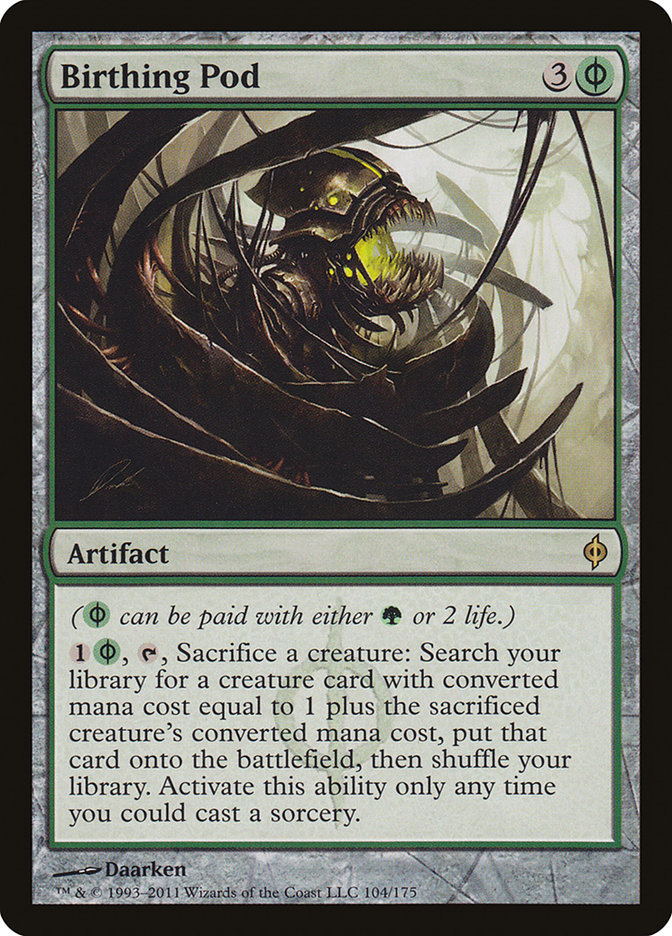
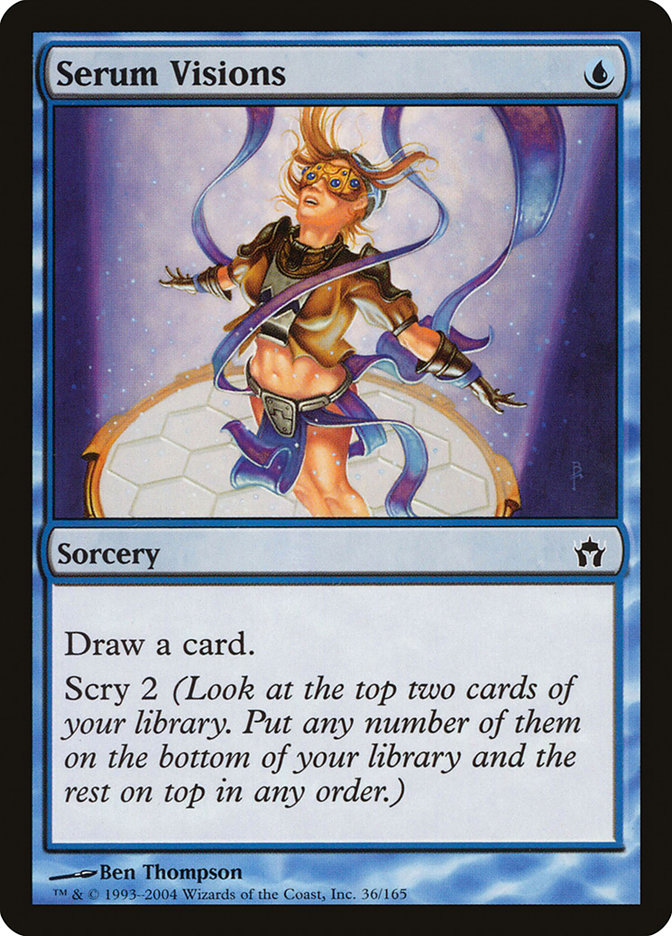

You can find the right play, but probably not quickly…
Around this point in time, tracking statistics led me to make another change, one you may very well have missed between this decklist and the last. I was trying to determine my level of happiness with the manabase and reaching the conclusion that the Verdant Catacombs in my deck really sucked; yes, it found the most important basic land to have in play against an opposing Blood Moon, and yes, it could find any of my other three colors of mana by getting the right Ravnica Block dual land, but each of my other two fetchlands can find five out of my six dual lands while Verdant Catacombs can only find three of them.
I didn’t like Arid Mesa initially because I was trying to balance the deck around being able to fetch basics, both to save life points consistently and to fight Blood Moon (against which fetching basic Mountain does nothing). But like Scalding Tarn and Misty Rainforest, Arid Mesa at least fetches five of my six dual lands – Scalding Tarn is not-Temple Garden and Misty Rainforest is not-Sacred Foundry, but Arid Mesa was not-Breeding Pool as opposed to the truly stunted Verdant Catacombs, which was not-Hallowed Fountain, not-Steam Vents, and not-Sacred Foundry all at the same time. I can count the number of times I’ve been Blood Mooned on one hand, and the number of times I’ve been successfully Blood Mooned on one finger – Blood Moon may actually help us get to the third red mana needed to cast Kiki-Jiki, Mirror Breaker, and when you’re playing a deck that can fetch its most important basics on-command and has Birds, Hierarchs, and Lotus Cobras to get us out from under Blood Moon, people usually don’t try to catch you with it because it usually won’t work.
With all of these thoughts in mind, I decided that at the very least the Verdant Catacombs needed to become an Arid Mesa – I’d drawn the Catacombs and had it be awkward one too many times, and trying out one Arid Mesa strongly suggested that I try another. I settled on a 4-3-2 split of Misty Rainforest–Scalding Tarn–Arid Mesa because I still valued the low-pain ability to fetch basics more than I valued drawing a diverse set of fetchlands in my opening hand, as basically any two fetchlands (even two of the same one) could set me up with excellent mana. I still wanted to be able to find a Forest against a Blood Moon if I absolutely had to, so I didn’t want to dig into the Misty Rainforests, but trading the fourth Scalding Tarn for the second Arid Mesa “only” cost me my ninth chance at a basic Island while keeping everything else pretty much the same.
If you like touching your deck, this is a strong option to consider. It gets better as you get better at Magic, which is a powerful draw to any deck – but adding that superpower to a fundamentally-unfair combo deck is even better than you think it is. I hit on this version and started practicing it just a few days before the first PTQ of the season, and was quite impressed with the way these small edges accumulated into a powerful effect… and I wanted something powerful to help supplement the deck’s draws, as the difference between games where you draw Birthing Pod and games where you do not is a wide gap that I was very interested in closing. While I still didn’t feel like Serum Visions was a powerful card-draw spell for the deck, as part of a larger whole I was impressed by how it closed the gap… until on a whim I decided to go deeper into the tank and give something else a try.
That “something else” started off in the sideboard; I applied “The Elephant Method” and realized that I could cover almost all of my matchup needs using thirteen of my fifteen sideboard cards, but those remaining two slots very strongly asked to be useful in the grindiest matchups: I needed two cards against U/W/R decks and Jund-type matchups. The “technical needs” cards that were asking to fill those slots instead were Scavenging Ooze and your choice of a Rule of Law effect – you can fit either Ethersworn Canonist or Eidolon of Rhetoric, and which one you pick depends on whether you think you’ll have the time to find and Pod away one of the deck’s limited number of two-drops. Neither of those cards would contribute in these matchups, and I decided to eschew both in order to try out a powerful card-draw effect in the board for when I played grindy games:
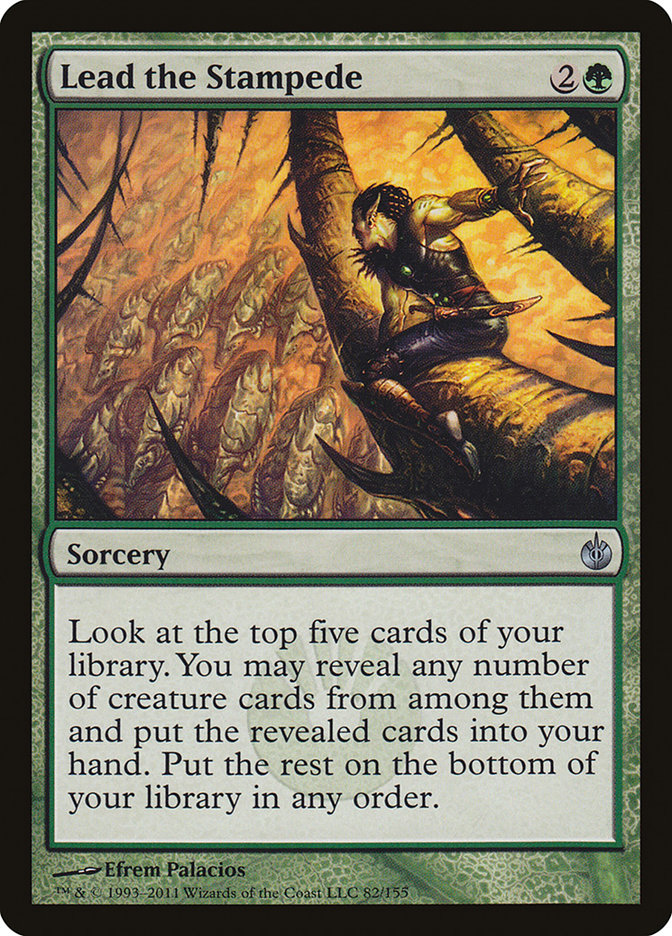
Maybe it sounds dumb, but I’ve played a lot of games with Lead the Stampede after a year spent living dangerously and casting Elves in Standard when people told me I was insane to not play Caw-Blade. I can appreciate the fact that this particular card will rarely put fewer than two cards into your hand, and the games where it puts three or more cards into your hand may very well be unwinnable for your opponent. The preconditions you need to meet for it to be good – 50% or more creatures in your deck – we’re already meeting, so having the ability to hit a string of threats when we cast this is surprisingly realistic (especially when you get to see the top card with Courser, along with all the rest).
I tried out two slots in the sideboard and started gaming with it, and as luck would have it I was paired against both U/W/R and Jund in my first event trying it out – once, it whiffed and drew me absolutely nothing in a game I was already very far ahead, so I didn’t really feel a sting, and twice it drew me three cards. I even pulled four off the top once, eliciting a groan from an opponent who had been sacrificing everything trying to get me locked down under Liliana only to see that happen off the top of my deck.
It was surprisingly awesome – and I had to ask myself whether I had finally found the missing piece of the puzzle, the card I always wanted Domri Rade to be but had never accidentally stumbled upon despite having a personal history with the card. While I really liked the Visions + Courser build, and approved of the “sideboard card” I’d found, it was also entirely possible that it would just be the better Plan A: race through my deck trying to complete Kiki-Jiki + Something To Do With It, maximizing my speed and raw power as the rest of the deck was already seeking to do rather than trying to be tricksy and gain small edges.
That led me to these seventeen cards:
3 Lead the Stampede
3 Lotus Cobra
1 Wall of Roots
1 Spellskite
3 Kitchen Finks
1 Vendilion Clique
1 Izzet Staticaster
1 Second Persist Four-Drop
1 Linvala, Keeper of Silence
1 Thrun, the Last Troll
1 Kiki-Jiki, Mirror Breaker
Wall of Roots once again reappears, since it can contribute to Lead the Stampede meaningfully and we no longer have the copies of Courser of Kruphix that had led me to cut it from the last design – we’d replaced them with an even more powerful card that was also focused in on improving our hardest matchups, so as much as I’d liked them they weren’t as critical here as before. And since I now had a lot of draw power to help me go digging through a lot of my deck, that singleton Thrun, the Last Troll had a decent chance of showing up in game one yet again.
That deck looked like this:
Creatures (30)
- 4 Birds of Paradise
- 2 Kiki-Jiki, Mirror Breaker
- 1 Wall of Roots
- 1 Vendilion Clique
- 3 Kitchen Finks
- 1 Murderous Redcap
- 1 Glen Elendra Archmage
- 4 Noble Hierarch
- 3 Lotus Cobra
- 1 Linvala, Keeper of Silence
- 1 Thrun, the Last Troll
- 1 Spellskite
- 2 Deceiver Exarch
- 1 Phantasmal Image
- 2 Restoration Angel
- 1 Zealous Conscripts
- 1 Izzet Staticaster
Lands (23)
Spells (7)

I liked a lot of what was going on here, but then that is because I liked a lot of what was going on in my initial deck – it took me to the PTQ finals, and if I’d just found a better version of what I was trying to do with Domri Rade I probably would have won that event very easily. I used Domri Rade’s “fight” ability exactly once on the day, and it wasn’t even that important, but I ultimately lost only because Domri failed at his one job, finding me cards to work with – a job which Lead the Stampede does excellently. This version doesn’t capture the experiences of playing with Courser of Kruphix, mostly because I wanted to try Lead the Stampede out by itself and get an accurate portrayal of making just the one change at a time – that’s how science works, after all! If you want to accurately identify the value of changing a variable, change only that variable and nothing else… or you may end up answering a different question than the one you thought you were asking.
Lead the Stampede was very good for me, good enough that I think it would have won the PTQ for me. But I’m not convinced that it is even the best version of itself – my willingness to work on weird decks no one else is touching reminded me of another past experience once I’d landed on the Lead the Stampedes that had served me well playing Elves aggro in Caw-Blade Standard… Tracker’s Instincts was the very best part of a not-very-good deck I tried to make work last year, good enough that Morgan Chang converted Tracker’s Instincts into a Grand Prix Top Eight in his four-color Reanimator deck last summer. And one of the advantages of playing Kiki-Pod is that you’re the Pod deck that plays blue… so I decided to give that card a try too, in case it fit the shape of what I was missing.
Foreshadowing: it did. Those seventeen cards looked like this:
3 Tracker’s Instincts
3 Lotus Cobra
1 Spellskite
3 Courser of Kruphix
1 Kitchen Finks
1 Vendilion Clique
1 Izzet Staticaster
1 Second Persist Four-Drop
1 Linvala, Keeper of Silence
2 Kiki-Jiki, Mirror Breaker
Putting it all together, that deck looks like this:
Creatures (30)
- 4 Birds of Paradise
- 3 Kiki-Jiki, Mirror Breaker
- 1 Vendilion Clique
- 1 Kitchen Finks
- 1 Murderous Redcap
- 1 Glen Elendra Archmage
- 4 Noble Hierarch
- 3 Lotus Cobra
- 1 Linvala, Keeper of Silence
- 1 Spellskite
- 2 Deceiver Exarch
- 1 Phantasmal Image
- 2 Restoration Angel
- 1 Zealous Conscripts
- 1 Izzet Staticaster
- 3 Courser of Kruphix
Lands (23)
Spells (7)

You’ll note this is the first version I’ve given a sideboard for – because this is the main-deck configuration I’ve settled on for this PTQ season, having explored all of the variants and weighed the options against each other. Tracker’s Instincts has some key advantages in its favor: while it will never put five creatures in my hand like Lead the Stampede potentially can, it also costs a full mana less than Lead the Stampede and has Flashback, letting me get a second use of the spell – potentially even through countermagic. This Flashback aspect also adds a slight element of “going off” once you start digging; sometimes, just sometimes, one Tracker’s Instincts flashes you past another and you get a free Flashback of the spell without having ever needed to draw the card. Tracker’s Instincts has all of the elements of the backup engine that I had been looking for, something besides Birthing Pod that will nonetheless work much like it does: once you start it going, it will tend to finish things by itself without needing to add new elements to the mix. Casting and flashing back Tracker’s Instincts can find both halves of the combo and mill you past more copies of itself, so once you start, it tends to keep going until the opponent is dead. Just like Birthing Pod – or the Terminator.
You can still maximize the spell thanks to Courser of Kruphix telling you whether the top card’s a target or not; it’s much easier to whiff when looking at four cards than when looking at five, and going through the top of your deck and not having anything worthwhile is a real problem that you have to address; sometimes you want a Kiki-Jiki and get a stupid Bird of Paradise. (But hey, at least you’re four draws closer to action – and if at first you whiff, there’s always the Flashback.) Playing this creature-searching spell alongside the “old,” seemingly-redundant number of Kiki-Jiki’s seemed correct, because I’ve built this deck to combo smoothly, naturally, quickly – and often. You want to be able to assemble Kiki-Jiki + Something To Do With It on a reasonable timetable, and that means having enough copies so that sometimes you naturally just draw the combo or can find it without having to dig too deep in the games where you don’t just draw Birthing Pod. The problem has always been “what to do when you don’t draw Birthing Pod,” however, and this feels to me like the best fix to that problem.
Designing the sideboard came easily, since it’s mostly the same cards I’ve been playing for some time now, but I applied the Elephant Method nonetheless based on the top deck choices as calculated by Adrian Sullivan’s article “320 Modern Decks, 4 Lessons” – I weighed what was good and what was bad in the main-deck for all of the following matchups, and made sure that I was giving myself access to the ideal fifteen-card sideboard to replace every weak card in every matchup.
One card is noticeably lacking: I decided to opt out of using an Ethersworn Canonist effect, because a) I played one in my sideboard for a year and literally never boarded it in, but also b) many of the matchups I found myself in had one bad card stuck in my deck with no good replacement in the sideboard, because I was siding a specific silver bullet for one specific combo deck rather than a broader answer to a wide variety of combo decks. The math worked for everything else if I accepted I couldn’t board a Fulminator Mage, Avalanche Riders, or Magus of the Moon for the Tron or Scapeshift matchups and that I couldn’t board an Ethersworn Canonist effect for the Storm matchup, replacing all of those needs with a Vendilion Clique that I would use in other matchups as well as against combo decks instead of a silver bullet solution. Against other combo decks, we’re always able to Pod into a disruption effect – Vendilion Clique – and may just be the faster and more consistent combo deck in the first place!
Sideboarding With Kiki-Pod
I normally hate giving sideboarding guides. So does our illustrious editor. We hate it for much the same reason – what you sideboard changes from game to game based on whether you are playing first or drawing first, it changes within the same matchup based on the exact contents of your opponent’s deck, and sometimes it even changes based on what you are trying to accomplish in a given game. However much I hate giving sideboarding guides, however, this is a deck that people want to see one for – so I’ll oblige, so long as you take it as a given that I am trying to show you what I tend to do, not giving absolutes. It’s better to understand the deck and learn how to use the sideboard, but until you’ve played it a while it can’t hurt to have access to someone else’s notes.
Out Versus Splinter Twin:
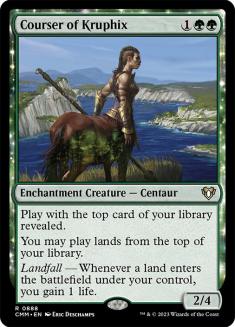


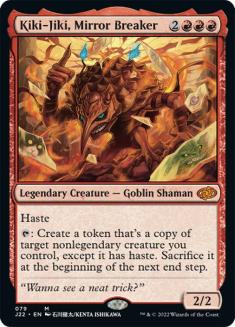
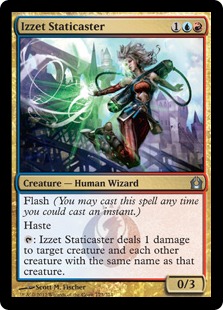
In:
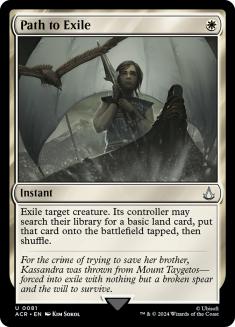


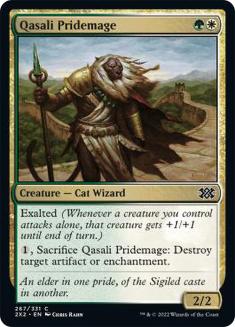
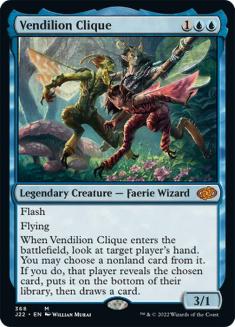
Courser is “bad” because it’s slow, fair, and involves tapping out at a point in the game where we might just die sometimes – all to play a “value” 2/4 that doesn’t do very much to advance or close the game. If they’re playing Snapcasters and/or Tarmogoyfs, the Scavenging Ooze is worth adding as well, with the next-worst card being the third Tracker’s Instincts, the Murderous Redcap, or the Kitchen Finks.
Out Versus U/W/R:
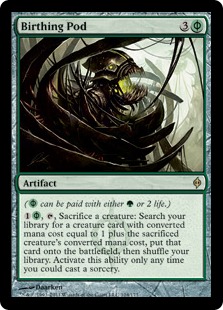
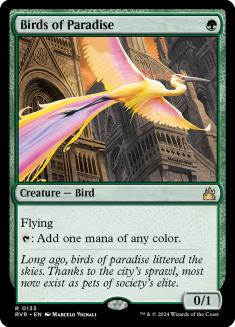


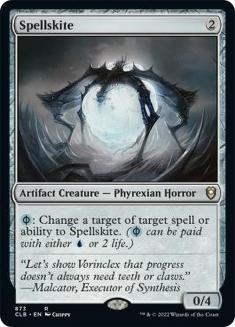

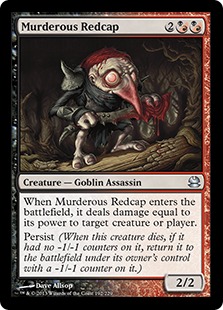
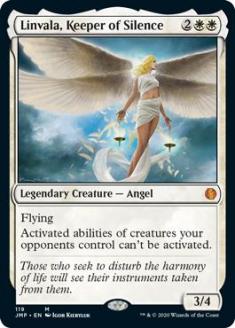
In:
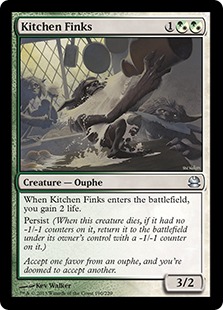







This is, of course, exactly wrong if we are instead talking about the U/W/R Kiki Control deck, where we need to have Path to Exile in after sideboarding lest we die because we cannot remove a Kiki-Jiki or Restoration Angel from play. Against the actual-control deck, we have all the time in the world without much to threaten us, so we need to prevent ourselves from getting hamstrung by a card like Pithing Needle or Stony Silence shutting down not just the Pod we draw but any subsequent Pods, and ironically I’ve found the best success “hedging” against that move by sideboarding out a Birthing Pod – literally the only time I do that, and only because it is so easy to get pinned with useless cardboard and/or not enough stuff in play to use it with.
We turn ourselves into a credible green beatdown deck with things like Finks and Thragtusk to two-for-one them on their Plan A of Bolt Everything That Moves, and we shave a Birds of Paradise and Lotus Cobra so that hopefully we don’t overextend too often into tragic Electrolyzes. We still want to draw a one-drop, but we want to cast a three on turn two, without a Lotus Cobra to set it up as that’s how we get blown out. And since actually trying to combo-kill them quickly is the exact wrong way to play this matchup, the accelerants have considerably less use to us past getting that one-turn leap ahead. Combo-kills still happen, but you have to clear the way with Vendilion Clique first so you know it’s clear – the “safer” combo to assemble is Kiki-Jiki + Thragtusk, which is still quite deadly indeed.
Against the combo version, we have to board in as if we are playing against Twin:








We don’t have the “luxury” here of being able to tap out for Thragtusk – we might just die, so we better not try. Kitchen Finks is also less relevant here because of Wall of Omens and Restoration Angel, we can’t just jam it and be glad for the likely two-for-one, it may actually just do nothing.
Out Versus Jund:





In:





Not much to say here; Jund decks are a reasonably strong matchup, and there is a lot of back-and-forth as the two decks try to trump each other or out-do each other with a string of two-for-ones. Take advantage of the fact that you can mount pressure against them fully but they always have to respect the possibility of dying out of nowhere, so their responses will tend to be carefully measured rather than extending to the fullest power their mana might allow – and we can take advantage of that to get ahead. Here you want to out-value them whenever possible, relying on the fact that the line of play “pod Finks, get Angel, blink Finks” is simultaneously both threatening a kill on the following turn and the best pure-value interaction we can get to develop our own board.
Out Versus Kiki-Pod Mirror:





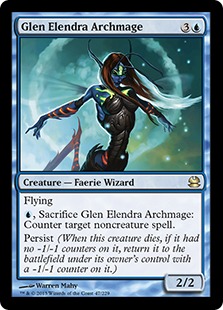
In:




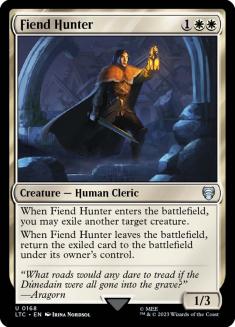
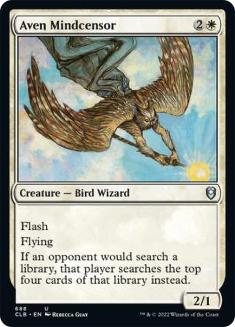
Life is easier if it’s only the semi-mirror; if you have Cobras and they do not, you can get up to so much shenanigans it is not even funny. If they are playing Chord of Calling – and, let’s face it, most of them are – you should reasonably consider keeping in Glen Elendra Archmage to keep it contained. The next-worst card is the third Tracker’s Instincts, though if you are on the draw an argument can be made for the next-worst card being the third Kiki-Jiki instead. Based on your opponent’s play, if (like me) they tend to hyper-focus on assembling the combo and worry about what you’re doing second (if at all), the second Vendilion Clique becomes much more important to sideboard in. One is usually enough to Pod through as you set up a defensive board, but if they’re just jamming you quickly, I’d rather draw a Clique than not-draw a Clique.
Out Versus Melira-Pod:







In:







You will play this matchup often, so it’s important to learn how it plays out – and how they can threaten you, or even punish you. Typically they can’t interact with Kiki-Jiki + Restoration Angel or Zealous Conscripts, as their only removal is usually Abrupt Decay, so seeking out lines of play that lead towards that combo – and do so without a Persist creature dying, if they have a Scavenging Ooze – is ideal. Orzhov Pontiff is a thing that happens, as does Linvala, and both suck – we can’t even remove a Linvala from play game one, we have to play around setting up a Zealous Conscripts turn in order to go off, and that can be unwieldy.
Out Versus Scapeshift:



In:




This is not to say that Kitchen Finks is “good” here, but it is at least not-terrible since it beats down and can keep them on a clock. The key here is setting up and protecting Glen Elendra Archmage or checking out their hand with Vendilion Clique at an awkward moment for them; they tend to be light on non-countermagic ways to interact with our board, so getting a Pod down and threatening to kill them with it quickly is stronger than aiming to Clique them over and over. Pod for Glen Elendra and make their life difficult, but don’t decide that this means you’re “safe” and shouldn’t try to kill them quickly – dead opponents cast no spells that Archmages need to counter.
Out Versus Tron:






In:
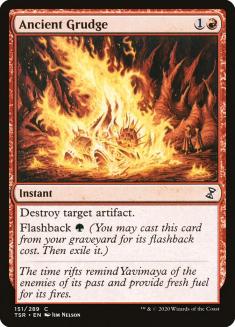





This is the least-interactive matchup possible, so knuckle down and race. Karn is a pain to beat, but if you can Ancient Grudge an Expedition Map, Karn may never happen on time. Deceiver Exarch tapping Tron lands on the upkeep of their third turn is likewise very strong, but mostly you can expect the game to involve not looking at their side of the board at all unless they make you – and jamming the combo as fast as you can, with maybe some mild harassment efforts on your part to keep them off-balance for a critical turn or two. It’s not a bad matchup, but it’s not a good one – in fact, it often feels entirely out of your hands, so it is my least favorite matchup even if I win.
Out Versus Storm:





In:





We’re willingly absent our best sideboard card, and board in a junky Kitchen Finks instead… for strategic beatdown purposes. Be faster than they are or draw better than they do – their deck sometimes just doesn’t work, and our goal is to use what disruption we have to make that happen that extra little bit more often. Like Tron it’s not a very interactive matchup, it’s mostly two people doing their own thing while sitting at the same table, but unlike Tron they are playing Lightning Bolt and countermagic so you do have things to play around against open mana. The worst Tron can do is Pyroclasm your team, if you get your combo they’re dead – the same is not true of Storm.
Out Versus Burn:





In:





Be the nightmare matchup I know you can be: Oozes, Finks, Coursers, and Thragtusks – which you can copy with Kiki-Jiki! – are bound to make their lives miserable. Never pay life you don’t have to and you’ll do just fine, especially if you can set up Glen Elendra Archmage to prevent them from using Skullcrack/Flames of the Blood Hand to ‘counter’ any lifegain triggers. (Or just counter two spells, that’s probably good enough too.) If they are playing Vexing Devils, you should consider boarding Path to Exile if you’re on the play – but not on the draw, as fetching a white source is going to cost you most of that life anyway, so you’re better off accepting it is a four-point burn spell for one mana.
Out Versus Affinity:







In:








You can go deeper if you’re on the play – I’ve been known to bring in the third Finks and two Thragtusks sometimes and just bury them under lifegain – but this is a good balance as far as focusing on what really matters. Your silver bullet to Pod for is usually Izzet Staticaster, especially if you have drawn an Exarch or Restoration Angel, getting to use it multiple times a turn is devastating for them. Most of their credible hopes involve a Cranial Plating on their Etched Champion, and if you can keep that from happening you’ll be ahead on the board and free to kill them at your leisure. It’s also worth noting that most Affinity decks are very light on ways to stop the combo once you’ve assembled it, with just a few Galvanic Blasts in their 75 if they even have them at all – you’re more likely to get Thoughtseized to stop it from happening in the first place than you are for it to get broken up once it’s in play, so if you can go for it but they have open mana, most of the time they’ll just die.
I really love playing this deck – it has a certain unfair flow to it, because any opponent who just plays out their cards without respecting whether or not you could kill them tends to end up dead. Because of that simple truth, most opponents have to develop their board at half-strength while you are free to advance yours fully. I consider it the strictly superior version of Pod to play, because it is the Pod deck that can kill you in one turn with just Birthing Pod and a random, unspecific assortment of creatures – Melira Pod is better at grinding out a value advantage turn after turn, but they never just kill you out of nowhere because they drew a Birthing Pod. Melira Pod doesn’t even tend to think of itself as a combo deck – but Kiki-Pod most certainly is, and an excellent one at that.
Maybe you don’t like how Kiki-Pod plays out across specific matchups, but as our variety of experiments above should show, you can build the deck in a variety of ways to address each of those aspects. I don’t even consider the decks that are “designed to beat us,” the U/W/R Control decks and bolt-happy Delver decks, to be particularly bad matchups – I’d rather play against them than Tron, after all, at least then the order in which you play your cards and your own skill as a player probably has an actual impact on whether you win or lose. Especially when you’ve learned how to play it adeptly, Kiki-Pod really has no bad matchups – and it’s always super-threatening, because sometimes just sometimes you draw the turn-three kill hand. That threat is always present, always warping the opponent’s decisions – and always giving you added value, turn after turn, even on the turns when you decline to kill your opponent with the combo and ‘merely’ advance your board even further. That’s why I’m going to Pod people for as long as they let me; the format may change, but I have no problem changing too in order to figure it out – or ending up someplace weird to beat the opponents who think they should be my worst matchup.
